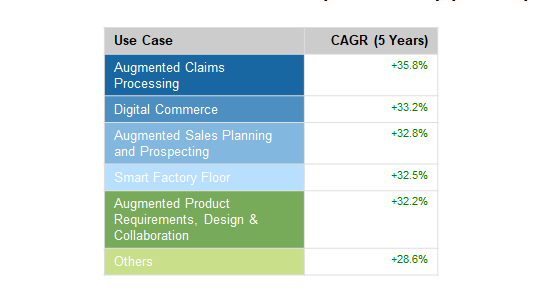IDC's latest report predicts that by 2028, global artificial intelligence spending will exceed US$632 billion, with an average annual compound growth rate of as high as 29%. Although generative AI currently accounts for a small proportion, it is growing at an alarming rate. It is expected that the average annual growth rate will reach 59.2% within five years and will reach 202 billion US dollars by 2028, accounting for 32% of overall AI spending. The report also provides a detailed analysis of AI spending in different technology categories, industries and usage scenarios, providing valuable insights for us to understand the development trends of the AI market. Software spending will continue to dominate the AI market, and the financial services industry will be the biggest beneficiary of AI solutions.
Recently, the International Data Corporation (IDC) released the latest "Global Artificial Intelligence and Generative Artificial Intelligence Spending Guide." According to the report, global spending on artificial intelligence (AI) is expected to exceed US$632 billion by 2028, growing very rapidly. Specifically, the average annual compound growth rate during this period will reach 29.0%. Ritu Jyoti, research vice president of IDC, said that the widespread application of AI is driving enterprises to transform in many aspects such as employee experience, customer interaction and business processes.
Although generative artificial intelligence (GenAI) has attracted widespread attention in the past year and a half, in fact, spending on GenAI is still lower than other AI applications, such as machine learning, deep learning, and natural language processing. However, the investment growth rate in GenAI is impressive, with its average annual growth rate expected to reach 59.2% in the next five years. IDC predicts that Gen spending will reach $202 billion by 2028, accounting for 32% of overall AI spending.

Among different technology categories, software spending will dominate and is expected to account for more than half of the overall AI market most of the time. Among them, AI applications and artificial intelligence platforms will account for two-thirds of software spending, while the remainder will be used for AI application development, deployment and AI system infrastructure software. In terms of hardware, spending on servers, storage and infrastructure as a service (IaaS) will also be relatively substantial.
In terms of industries, the financial services industry will be the largest beneficiary of spending on AI solutions, expected to account for more than 20% of overall spending. The next major spending industries include software and services and retail. IDC also pointed out that AI spending in the business and personal services industries and the transportation and leisure industries will grow relatively quickly.
In terms of use scenarios, AI infrastructure provision will be the main investment area for most enterprises, although growth is expected to be slower, with an average annual growth rate of 14.7%. But other examples like enhanced fraud analysis, customer service and assistance will see even greater growth.
Karen Massey, research manager at IDC, said that by 8 years, U.S. spending is expected to reach $336 billion, becoming the largest market for global AI investment. Western Europe, China and Asia Pacific (excluding Japan and China) will follow. It can be seen that the investment potential in the AI field is huge, and the future development prospects are worth looking forward to.
Highlight:
? Global AI spending is expected to reach US$632 billion by 2028, with an average annual growth rate of 29.0%.
? The financial services industry will account for more than 20% of overall AI spending, becoming the largest spending industry.
Generative artificial intelligence has the fastest spending, with an average annual growth rate of 59.2% in the future.
All in all, IDC's report clearly shows the booming development trend of the artificial intelligence market, especially the rapid growth of generative AI that deserves attention. In the future, AI will play an increasingly important role in all walks of life, and its development prospects are immeasurable.